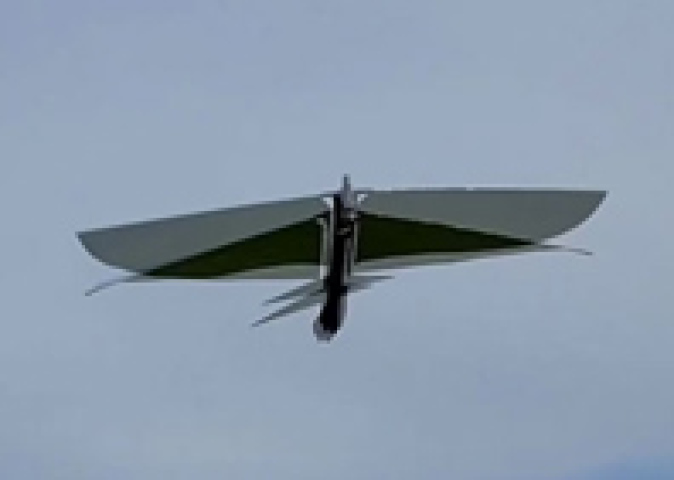Robo Raven - Eye in the sky

A robotic bird devised by the U.S. Army and University of Maryland researchers mimics the flight of birds so well that even hawks were fooled.
Although famed for their keen eyesight, during a test flight these supreme predators attacked the robot like they would flesh and blood prey.
The robot bird developed at the Maryland Robotics Center has been dubbed Robo Raven. To keep it light as a bird, it is assembled from carbon fibre; purpose-designed 3D-printed heat-resistant plastic polymers, instead of heavier metal components; Mylar sheets for the wings and tail; and foam. Just two feet in length, it weighs no more than a soft drink can. Its flight is radio-controlled. Quieter than a helicopter, it can sneak up on its targets unremarked. And it can reach speeds of up to 16 kph.
But what makes Robo Raven so realistic is its uncanny ability to independently flap each wing, enabling it to swoop, soar, dive and roll more acrobatically than previous models. “The Robo Raven has two motors that are coupled to coordinate the movements between the two wings. It can be programmed with arbitrary flight patterns”, says Satyandra Gupta, whose brainchild the robot is.
The robot’s design is directly modelled on nature. Its body is a hollow frame, a rigid, lightweight structure that mimics the hollow skeletal system of real birds.
As yet, the robot bird is not fitted with sensors. Gulls, and sometimes crows, try to fly close to the bird during testing, but birds of prey like falcons and hawks are much more aggressive towards the Robo Raven. The robot has an on-board camera which could make it excellent for reconnaissance, as long as it can be given a longer flight range.
More information
www.robotics.umd.edu/





